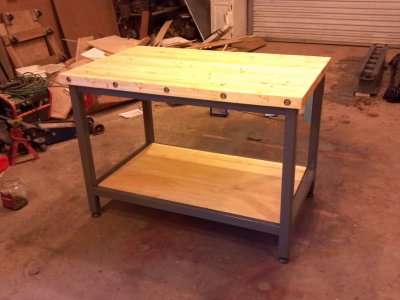The gray frost is microscopic pitting where the rust used to be. If you know a product that will leave that shiny and smooth, patent it.
also, Evaporust works fine with a layer of ice on top, as I learned last month. It just works more slowly but the results are the same.
Most of the parts I have "de-rusted" with Evaporust have come out very shiny and smooth after hitting them with a wire brush or steel wool (depending on the part). Now, I didn't say mirror finish. You are right. Once a part has been rusted, the only way to take it back to its original finish is to remove the surface down past the rust pitting. That's where I am with the lathe bed. Can't take it down past the pitting without ruining the bed. So I'll live with the little bit of pitting that is left after removing the rust.
As for temperatures, I have found that the effectiveness of Evaporust is greatly enhanced by warming it. I have a large crock pot that will hold a gallon. I set it on warm and leave parts in it overnight. Works wonderfully.
Here are some pics of the bed, before and after. You be the judge (remember, the flash enhances colors and makes things look worse than they are in reality).
Before:
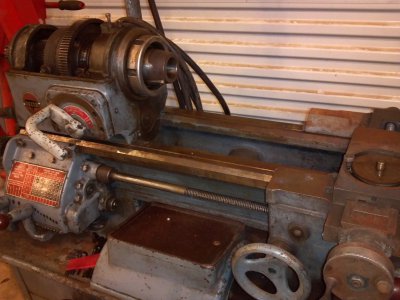
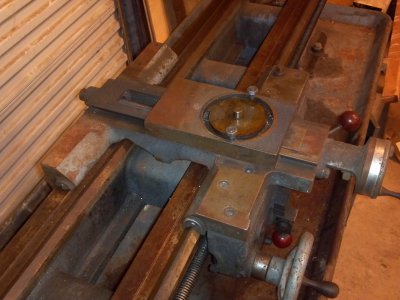

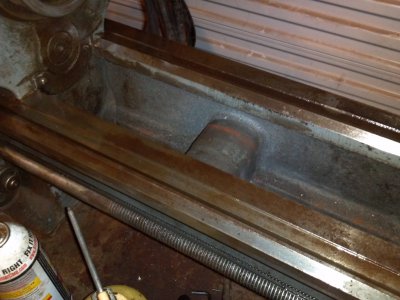
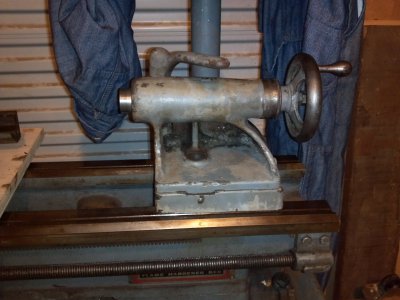
This picture was after cleaning with a razor blade and WD-40:

After tanking in Evaporust:
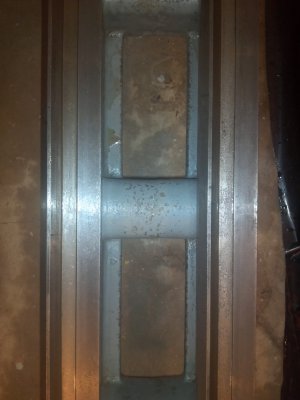
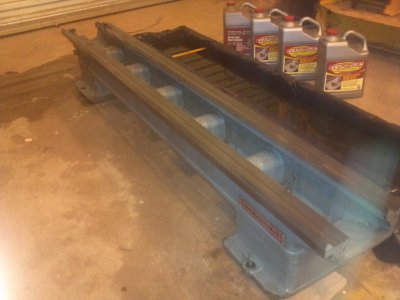
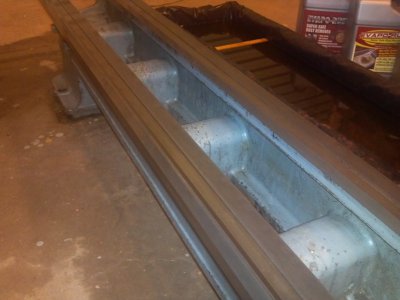
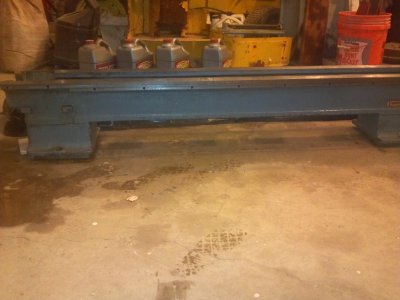
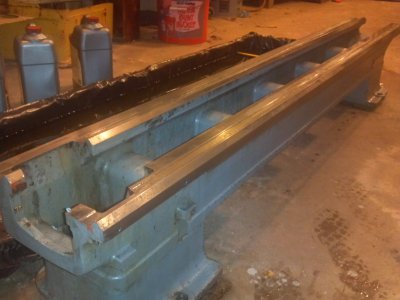
Looks a lot better than before, now that I look at the pictures. After I removed the carriage and tailstock, I scraped the ways with a razor blade and WD-40. That took the rust down to flush and smooth with the good steel. The Evaporust removed the remainder. After the evaporust, I went over the ways a few swipes with 0000 steel wool to remove the Evaporust "frost" (I hadn't thought of that word, but it is a good one to describe it).
Hopefully, I'll be putting things back together over the next two weeks. All the necessary parts have been purchased or made. All the castings are in the process of being painted, except the bed and cabinet, which I will leave for some other time. Both are getting a very thorough cleaning.
Still looking for a new cross feed screw and nut.
- - - Updated - - -
A couple of those pics came out really bad. Don't know why. I'll try to get better ones on Monday.
- - - Updated - - -
By the way, I finished the workbench for the South Bend lathe. I'm going to try to get it installed on the workbench next week. Once I finish the DR it will be the SB's turn.
